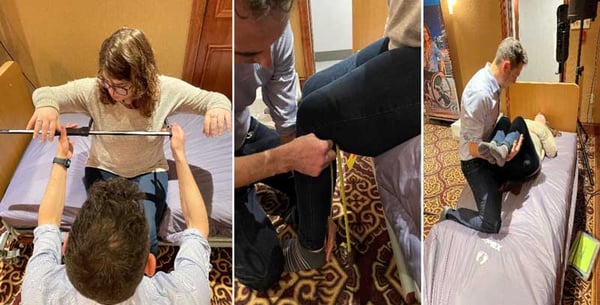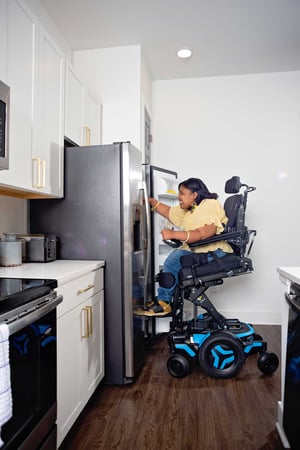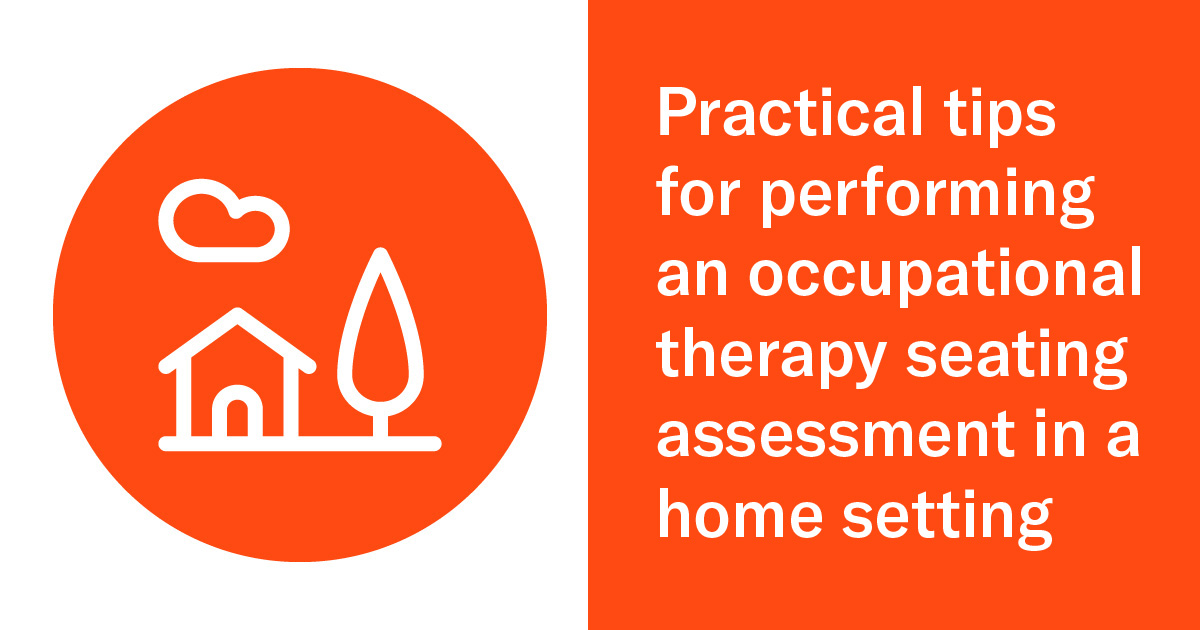Previously, we introduced the concept of performing seating assessments in the community going over a few challenges and preparing to visit your client in their home. This week we're continuing the discussion of in-home seating assessments.
Seating Assessment
When performing an in-home seating assessment, start by assessing the environment as soon as you enter a person’s home or even while you’re driving up to their home. This is quite helpful compared to working in a clinic because you can see potential issues that may affect your prescription from the beginning. What kind of home access do they have – or require? What kind of vehicle do they drive? What is the community like? Is it rural? Are there sidewalks? Dirt road? This information is invaluable for your prescriptions of mobility equipment.
Once you are ready to start the postural assessment, I try and see how I can effectively get the client into a supine position. If I know in advance the client is dependent for transfers, I will often ask for the client to be in bed for the start of the appointment. This way I can also take a closer look at the state of the wheelchair and the seating. Sometimes having a chance to look at the client’s mobility and seating system before they sit in it can give you lots of insight as to what is the possible root of the issue they may be reporting.

Sometimes you can’t get the client into a supine position. They may not be able to transfer or have a suitable surface with which to lay on. I have, in the past, done my best with the client seated in their wheelchair for this part of the assessment. I have removed the footplates of their existing wheelchair and assessed hip flexor range of motion—in conjunction with back angle—in this position with my hand on their PSIS (posterior superior iliac spine) while flexing their hips. If I have caregiver support, or if the client has sufficient balance, I remove the backrest and assess their balance, shoulder range of motion (ROM), neck ROM, as well as their thoracic spine ROM. This may not be ideal but getting as a complete a picture of what is flexible/inflexible is key in prescribing the ideal supports for your client.
In terms of getting precise measurements, I highly recommend you do not measure the client sitting on their bed or mattress. When a client is immersed into a medium like foam you tend to get skewed results. If the client can’t tolerate sitting on a kitchen chair, or other firm surface due to poor transfers or skin issues, I have them sit on my transfer board if possible. It isn’t ideal, but I find I get better results this way than sitting on a bed alone.

The biggest advantage of the at home seating assessment is you get real time views of how the client functions at home including: transfers, bathing, toileting, meal prep, home access, as well as vehicles. I always insist the client show me as much functional activities they can tolerate at the time of the assessment as this gives me valuable insight as to what they require in terms mobility as well as positioning.
I also get consent and take as many pictures as I can. This is the best way to collaborate with colleagues in this situation or if you need a second opinion. Plus, if you miss something in your assessment having a good set of pictures can sometimes help to fill in some of the gaps.
Safety
If you are working in the field by yourself, it is always good to let colleagues know what your tentative timeline is for the assessment. I will also arrange to have a colleague wait for my call when I’ve finished my assessment in the case of a known aggressive or difficult client. I will always tell my students to always “trust their gut” and leave if the situation becomes untenable. You can never be too safe.
Seating assessments are not easy, even under the best of circumstances. That said, the most accurate information you can gather can make the outcomes of the process go much more smoothly and, in the end, help your client achieve their goals.
One final note, I made a point of taking a few minutes at the beginning of each new in-home assessment to get to know the client’s dog (if they have one). I found when I did this it would relax everyone in the house. Nothing is worse than having an overprotective dog barking, or even worse, biting while you are helping out their owner. Further, I found when I made the dog more comfortable, it had a positive effect on the client and their willingness to collaborate with me. This is a great and simple way to start establishing good therapeutic rapport. It is a small detail, but it worked for me more often than not.
In the end, I always end on the words of advice from the person who taught me how to do seating assessments “don’t guess, assess!”
 Stefan Morin, OT
Stefan Morin, OT
Regional Clinical Education Manager
Stefan Morin, OT, is a registered occupational therapist who graduated from the University of Toronto in 2008 with a master’s degree in Occupational therapy. Stefan joined Permobil in July 2021 as a Regional Clinical Education Manager for the Atlantic Provinces and Quebec. From 2008 – 2012 Stefan practiced at the Lyndhurst Centre Brain and Spinal Cord Rehabilitation Program, located in Toronto, Canada working both as an inpatient OT as well as in the outpatient Seating Clinic providing complex seating and mobility solutions for a variety of clientele. In 2013 Stefan moved to Moncton, New Brunswick Canada and worked in the community, providing complex seating and mobility solutions, home modification solutions, as well as working with veterans with mental health and addictions issues.

